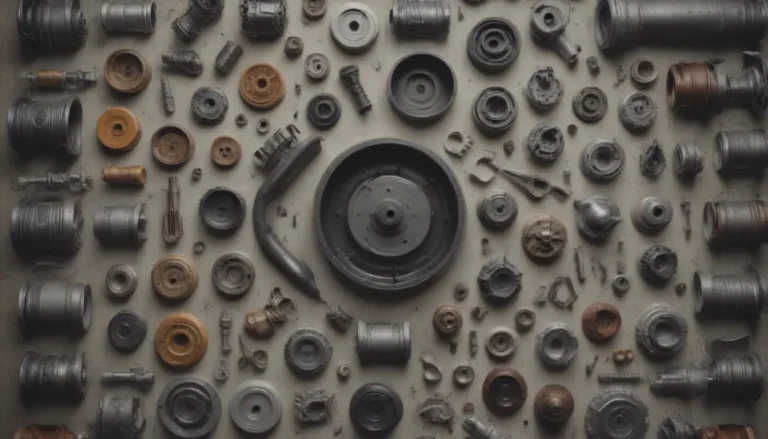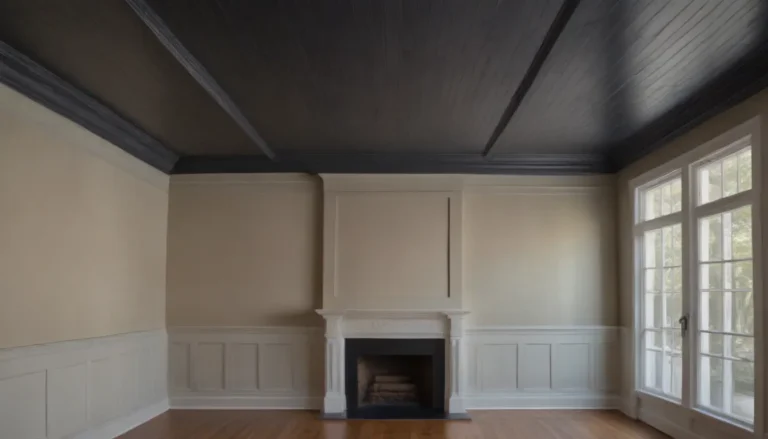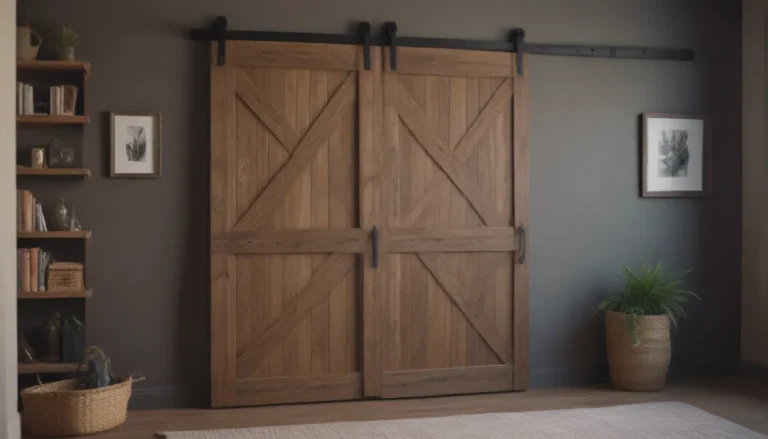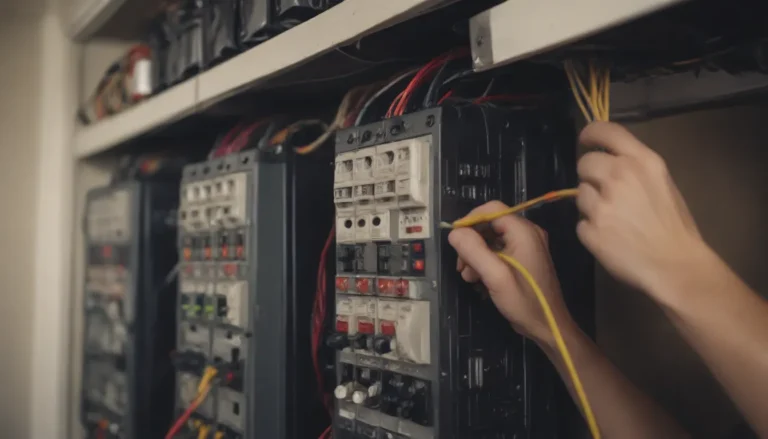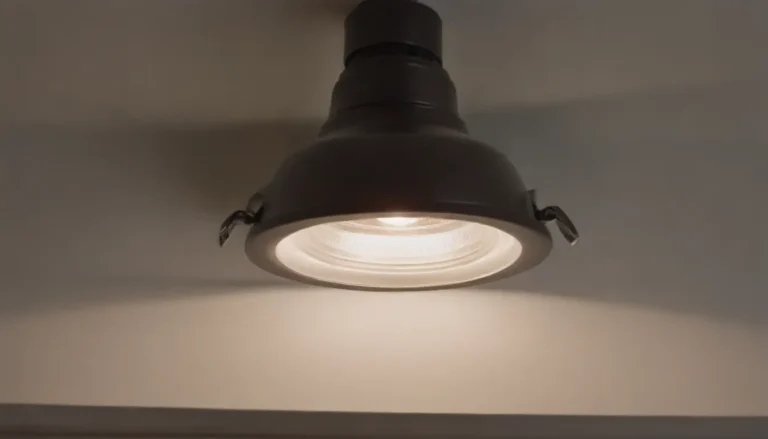The Ultimate Drywall Screw Spacing Guide: Mastering Installation Techniques
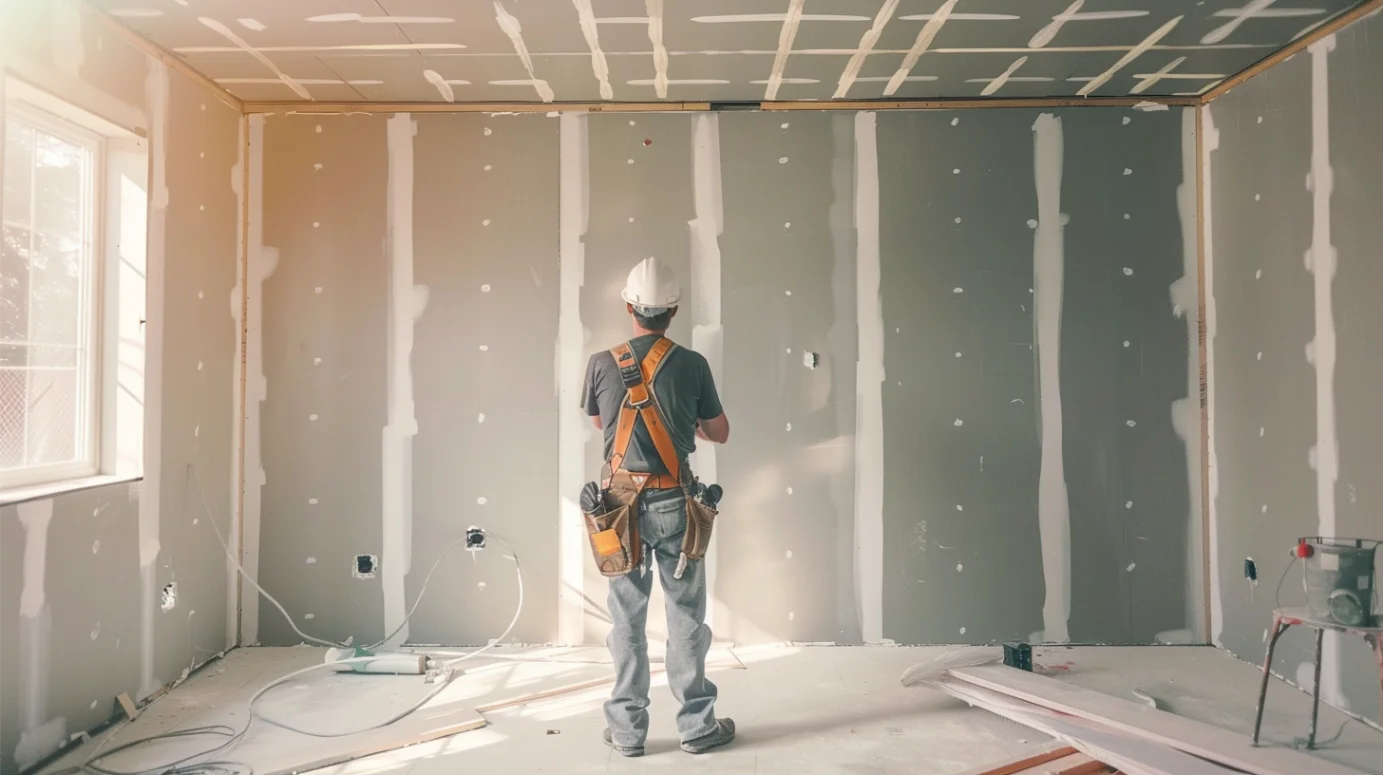
Introduction
Are you gearing up for a DIY drywall project but feeling a bit overwhelmed by all the technical details? You’re not alone! One of the most crucial aspects of drywall installation is getting the screw spacing right. It’s a key factor that can make or break your project, affecting both the structural integrity and the final appearance of your walls and ceilings.
In this comprehensive drywall screw spacing guide, we’ll walk you through everything you need to know to nail your next drywall project (pun intended!). From understanding the basics of screw placement to mastering the perfect drywall screw pattern, we’ve got you covered. We’ll even answer burning questions like “How many screws per sheet of drywall?” and “What’s the ideal screw spacing for drywall?” So, let’s dive in and demystify the world of drywall screw spacing!
Understanding the Basics of Drywall Screw Spacing
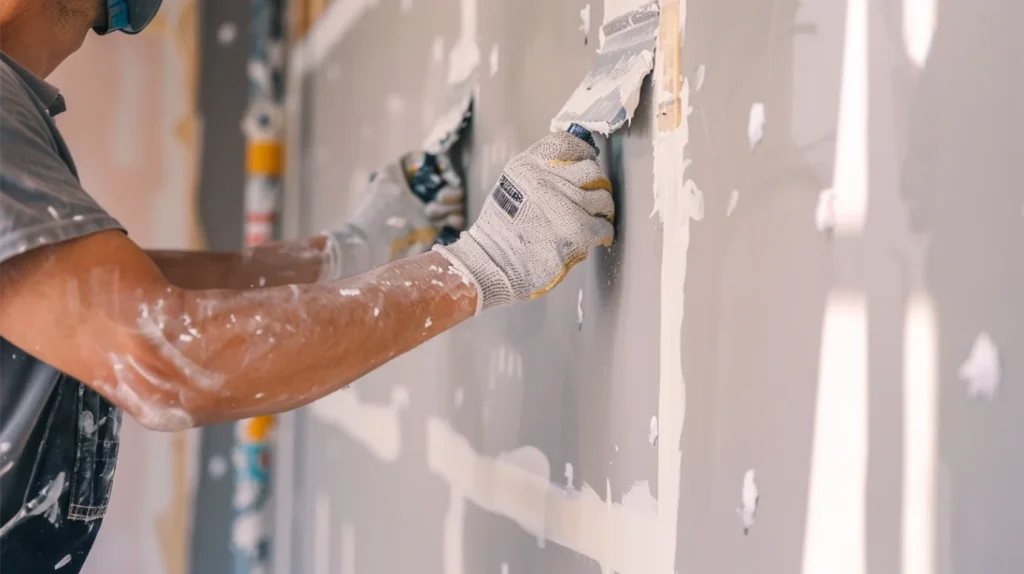
Before we get into the nitty-gritty details, let’s cover some fundamental concepts that will help you understand drywall screw spacing better.
Key Terms to Know
- Edge: The outer boundaries of a drywall sheet
- Taper: A gradual indent along the two long edges of the drywall
- Field: The central area of the drywall sheet, excluding the edges
- Lippage: Unevenness or protrusion between adjacent panels
General Guidelines for Drywall Screw Spacing
Here are some basic rules of thumb to keep in mind:
- Wall Fields: Space screws no more than 16 inches apart
- Wall Edges: Place screws 8 inches apart
- Ceiling Fields: Keep screws 12 inches apart
- Ceiling Edges: Space screws 7 to 8 inches apart
- Edge Distance: Maintain about 3/8-inch distance from panel ends and edges
Remember, these are general guidelines. Always check your local building codes for specific requirements in your area.
Mastering Wall Screw Spacing
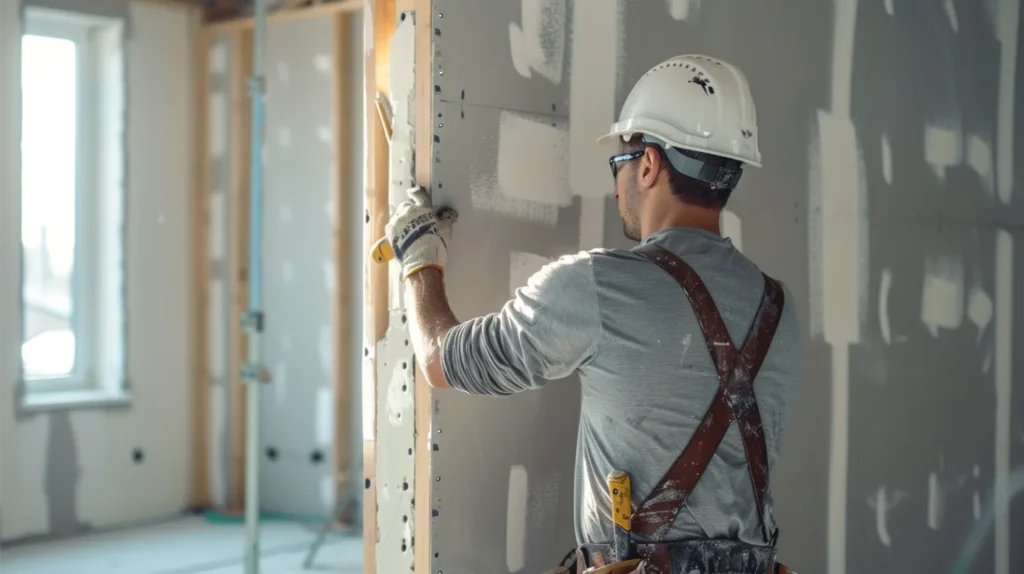
When it comes to hanging drywall on walls, proper screw spacing is crucial for a sturdy and smooth finish.
Wall Fields
For the central areas of your wall panels:
- Space screws a maximum of 16 inches apart
- Some builders prefer tighter spacing of 12 inches for added security
- Ensure uniform spacing for consistent support
Wall Edges
Along the edges of your wall panels:
- Place screws 8 inches apart
- This closer spacing creates a continuous seam, making taping and mudding easier
- Be careful not to space screws too closely, as this can lead to crumbling edges
Pro Tip: Drywall Screw Pattern
For added strength and to prevent edge crumbling, consider staggering your screws on adjoining panels. This technique distributes the stress more evenly across the drywall.
Perfecting Ceiling Screw Spacing
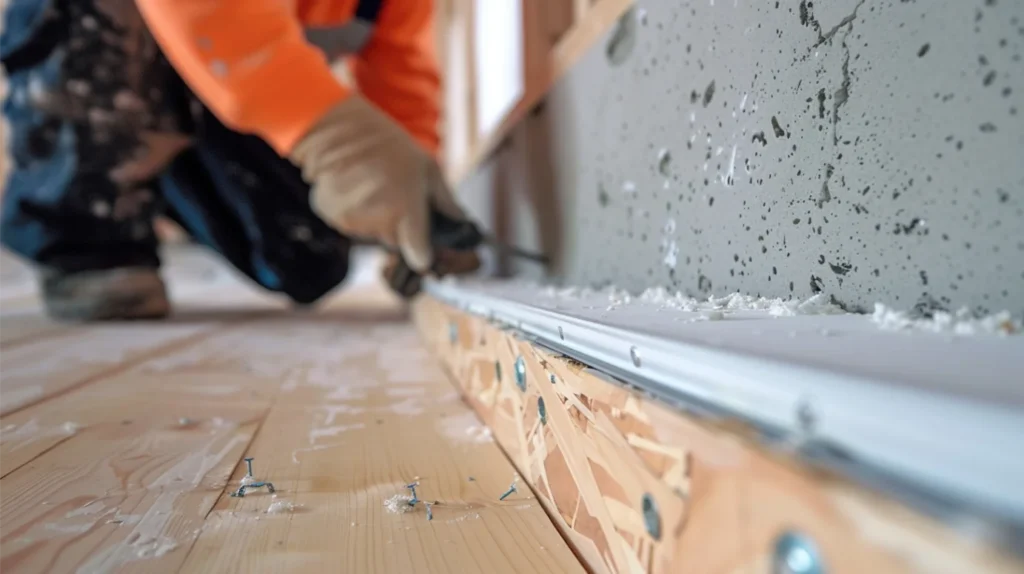
Ceilings require special attention due to the effects of gravity and potential sagging.
Ceiling Fields
For the main areas of your ceiling panels:
- Space screws 12 inches apart
- Maintain consistent spacing for even support
- Consider using adhesive in addition to screws for extra strength
Ceiling Edges
Along the edges of your ceiling panels:
- Place screws 7 to 8 inches apart
- This tighter spacing helps combat the increased stress on ceiling drywall
- Industry recommendations may vary slightly, so check with local experts
How Many Screws Per Sheet of Drywall?
One of the most common questions in drywall installation is, “How many drywall screws per sheet do I need?” Let’s break it down:
- For a standard 4×8 foot sheet installed horizontally on a wall, you’ll need about 32 screws.
- This includes four screws on each of the five middle studs and six screws on each of the two sides.
Calculating the Number of Screws Needed
Planning ahead can save you time and trips to the hardware store. Here’s how to estimate the number of screws you’ll need:
- As a rough guide, plan for one screw per square foot of drywall
- For a more precise calculation:
- Divide the total wall/ceiling square footage by 32 (screws per sheet)
- Multiply the number of sheets by 32
For example, if you’re covering a 320 square foot area, you’d need approximately 320 screws.
Code Pattern for Drywall Screw Spacing
While there isn’t a universal “code pattern” for drywall screw spacing, many local building codes and professional organizations provide guidelines. Here’s a general pattern that’s widely accepted:
- Start 3/8 inch from the drywall edge
- Place screws every 8 inches along the edges
- In the field, place screws every 16 inches (or 12 inches for ceilings)
- Stagger screws on adjacent panels to prevent cracking
Always check your local building codes for specific requirements in your area.
Enhancing Your Drywall Installation
While proper screw spacing is crucial, there are other techniques you can use to improve your drywall installation.
Using Adhesive for Added Strength
Applying construction adhesive can significantly enhance the bond between drywall and framing members:
- Apply adhesive to studs or joists before attaching the drywall
- This allows you to potentially double your screw spacing
- Be cautious: once the adhesive sets, repositioning becomes difficult
Creating the Perfect Screw Pattern
The pattern of your screws can affect both the strength and appearance of your drywall:
- For edge screws, stagger them on adjoining panels to prevent edge crumbling
- In field areas, decide whether to stagger or align screws based on your preference for weight distribution or structural support
Frequently Asked Questions
Q: How many screws do I need per sheet of drywall?
A: For a standard 4×8 foot sheet installed horizontally, you’ll need about 32 screws.
Q: What’s the ideal screw spacing for drywall?
A: On wall edges, space screws 8 inches apart. In wall fields, space them 16 inches apart. For ceilings, use 7-8 inches on edges and 12 inches in fields.
Q: Can I use nails instead of screws for drywall?
A: While nails were once common, screws are now preferred for their superior holding power and resistance to popping.
Q: What happens if I space my screws too far apart?
A: Improper spacing can lead to sagging, cracking, or even drywall failure over time.
Q: Do I need to use adhesive with my screws?
A: Adhesive isn’t mandatory but can provide extra strength and potentially reduce the number of screws needed.
Conclusion
Mastering the art of drywall screw spacing is a crucial skill for any DIY enthusiast or professional builder. By following this comprehensive guide, you’re well on your way to achieving a flawless drywall installation. Remember, proper screw spacing not only ensures structural integrity but also contributes to a smooth, professional-looking finish.
Whether you’re tackling a small repair job or embarking on a full room renovation, these guidelines will help you achieve the best results. Don’t forget to always check your local building codes and, when in doubt, consult with a professional.
Now that you’re armed with this knowledge about drywall screw patterns, spacing, and how many screws per sheet you need, it’s time to grab your tools and put your newfound expertise to the test. Happy drywalling!
